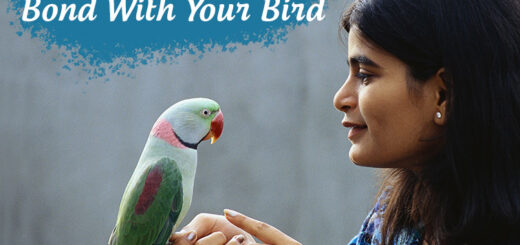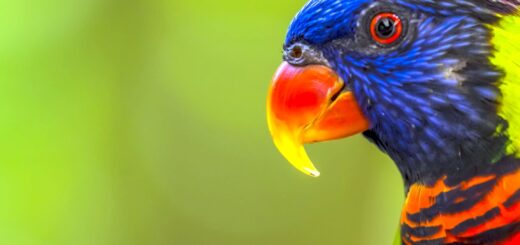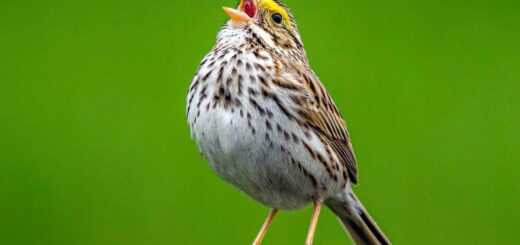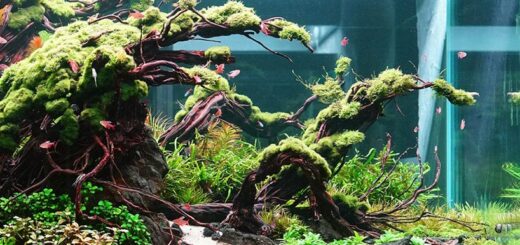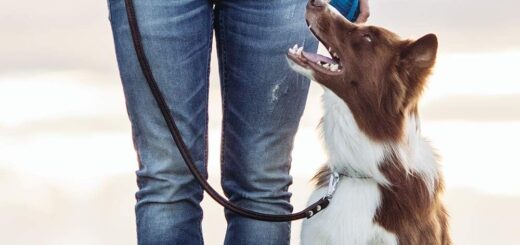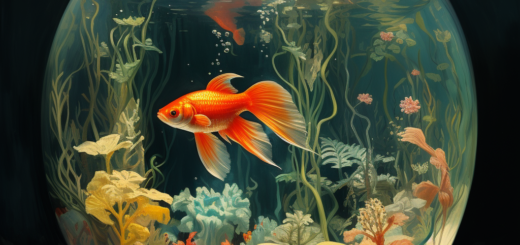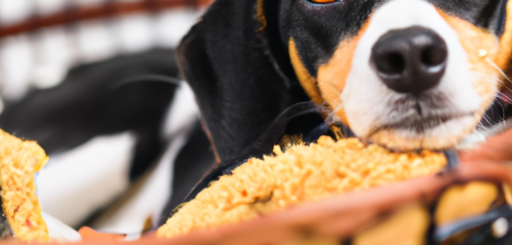Cage Setup 101: Creating The Perfect Environment For Your Bird
In this article, you will learn all about creating the ideal cage setup for your beloved bird. From selecting the right size and style of cage to choosing the perfect location and providing essential accessories, we’ve got you covered. Discover expert tips on creating a safe, comfortable, and stimulating environment that will enhance your bird’s well-being and happiness. Get ready to create a perfect home for your feathered friend!
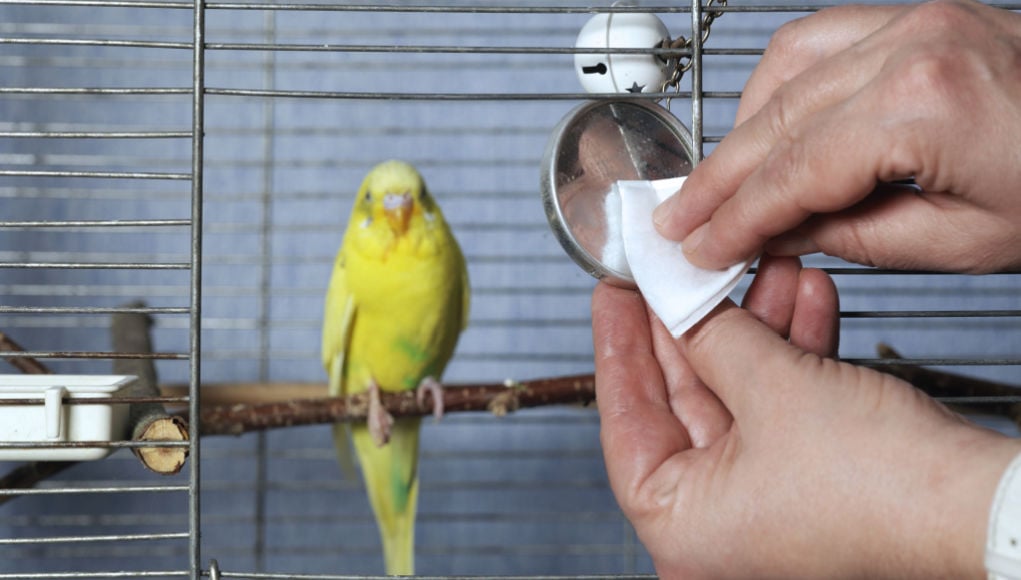
This image is property of www.thehappychickencoop.com.
Click here to check out How To Build An Aviary!
Choosing the Right Cage
When it comes to choosing the right cage for your bird, there are a few key factors to consider. The size and shape of the cage, the materials it is made of, and the bar spacing all play important roles in creating a comfortable and safe environment for your feathered friend.
Size and Shape
The size and shape of the cage are crucial for your bird’s overall well-being. Birds need plenty of space to move around, stretch their wings, and engage in natural behaviors. As a general rule, the bigger the cage, the better. It should be spacious enough for your bird to fully extend its wings without hitting any walls or obstacles. A good guideline is to choose a cage that is at least twice the wingspan of your bird.
In terms of shape, longer cages are generally better than taller ones. This allows for more horizontal flight and more opportunities for your bird to hop and climb along the length of the cage. However, make sure the cage is tall enough for your bird to fully stretch its body and flap its wings without any restrictions.
Materials
The materials used in the construction of the cage are another important consideration. Look for cages made of safe and durable materials, such as stainless steel or powder-coated metal. These materials are resistant to rust, easy to clean, and provide a sturdy and secure environment for your bird.
Avoid cages made of materials like lead or zinc, as these can be toxic to birds if ingested. Additionally, wooden cages are not recommended as they can harbor bacteria, mites, and other pests.
Bar Spacing
The bar spacing of the cage is crucial to prevent your bird from escaping or getting stuck. Birds have a natural curiosity and can squeeze through surprisingly small gaps. Pay attention to the bar spacing, ensuring it is narrow enough to prevent your bird from sticking its head, feet, or wings through.
For smaller birds such as finches or canaries, the bar spacing should be around 1/2 inch. For medium-sized birds like budgies or cockatiels, the spacing should range between 1/2 to 5/8 inch. Larger birds like parrots or macaws require bar spacing between 5/8 to 1 inch.
Positioning the Cage
Once you’ve chosen the right cage, the next step is to consider its positioning. Whether your bird will be housed indoors or outdoors, the airflow, temperature, and light exposure are crucial factors to ensure your bird’s comfort and well-being.
Indoor vs. Outdoor
Deciding whether to house your bird indoors or outdoors is a decision that depends on various factors, including the climate in your area, the size of your bird, and your personal preferences. Indoor cages provide better control over temperature and exposure to potential hazards, while outdoor cages offer the benefits of fresh air and natural sunlight.
If you choose to keep your bird indoors, make sure the cage is placed in an area away from drafts, direct sunlight, and heavy traffic. This will help maintain a stable and comfortable environment for your bird. If you opt for an outdoor cage, ensure it is securely built and provides protection from predators and inclement weather.
Airflow and Temperature
Birds are sensitive to temperature changes and drafts. It is important to place the cage in an area with good airflow, but not in a spot that is directly exposed to drafts or air conditioning units. Avoid placing the cage near windows or doors that can be opened frequently, as sudden temperature fluctuations can be stressful for your bird.
Maintaining a stable temperature between 65-80°F (18-27°C) is ideal for most pet birds. Keep an eye on the temperature in the room and adjust accordingly to ensure your bird remains comfortable. You can also provide additional heating or cooling options, such as ceramic heat emitters or fans, to help maintain a suitable temperature.
Light Exposure
Light exposure is essential for the overall health and well-being of your bird. Birds require exposure to natural or full-spectrum light to synthesize Vitamin D3, which helps with calcium absorption. If the cage is placed indoors, make sure there is sufficient natural light or provide full-spectrum lighting to mimic natural sunlight.
Position the cage in an area where it gets indirect sunlight or use specially designed lights that emit UVB rays. Avoid placing the cage in direct sunlight, as this can lead to overheating or create harmful hot spots within the cage.
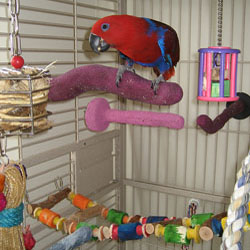
This image is property of avianenrichment.com.
Click here to check out How To Build An Aviary!
Providing Adequate Space
To ensure your bird’s happiness and physical well-being, it’s important to provide adequate space within the cage. Perch placement, toys and enrichment, and a dedicated feeding area are all essential elements to consider.
Perch Placement
Birds spend a significant amount of their time perching, so the placement of perches within the cage is crucial. Provide perches of varying heights and diameters to allow your bird to exercise its feet and avoid developing pressure sores. Place the perches away from food and water dishes to prevent contamination and make sure they are spaced out to allow easy movement and exploration.
Consider placing perches at different levels within the cage, mimicking the natural branches and perching opportunities birds would have in the wild. This will encourage your bird to move around, exercise, and help prevent muscle atrophy or joint stiffness.
Toys and Enrichment
Toys and enrichment are essential for keeping your bird mentally stimulated and preventing boredom. Include a variety of toys in the cage to cater to your bird’s natural instincts, such as shredding toys, foraging toys, and puzzle toys. Rotate the toys frequently to keep your bird engaged and prevent them from losing interest.
Ensure that the toys you provide are safe and bird-specific. Avoid toys with small parts or toxic materials that can be ingested. Opt for toys made from bird-safe materials, like untreated wood, stainless steel, or natural fibers, and avoid toys with strings or loops that can potentially pose a strangulation hazard.
Feeding Area
Creating a dedicated feeding area within the cage is important for maintaining cleanliness and hygiene. Place food and water dishes in an easily accessible location, away from perches and toys. This will help prevent contamination and keep the food and water clean, reducing the risk of bacterial growth.
Consider using elevated dishes or bowl holders to prevent food and water from being soiled with droppings or debris. Ensure that fresh water and food are available at all times, and clean and refill the dishes regularly to maintain freshness and prevent bacterial growth.
Ensuring Safety
Creating a safe environment is paramount for the health and well-being of your bird. Avoiding toxic materials, ensuring secure doors and latches, and providing predator protection are all essential for keeping your bird safe and secure.
Avoiding Toxic Materials
When setting up your bird’s cage, it’s important to avoid using materials that may be toxic to birds. Certain household items, such as nonstick cookware, aerosol sprays, air fresheners, and scented candles, can release harmful fumes that can be toxic or fatal to birds. Choose bird-safe cleaning products and avoid using chemicals or pesticides in or near the cage.
Additionally, be cautious of the types of plants placed around the cage. Some plants, such as avocado, certain lilies, and philodendrons, are toxic to birds if ingested. Research and ensure that any plants in or near the cage are safe for your bird.
Secure Doors and Latches
One of the top priorities in setting up a bird cage is to ensure it has secure doors and latches. Birds are clever and can quickly learn how to manipulate simple door mechanisms. Invest in a cage with sturdy doors that are difficult for your bird to open and escape from.
Regularly check the integrity of the cage doors and latches to ensure they are functioning properly. Avoid using makeshift solutions like twist ties or clothespins to secure the doors, as they can easily be dislodged or manipulated by your bird.
Predator Protection
If you plan to house your bird outdoors or in an aviary, predator protection is crucial. Birds are vulnerable to various predators, such as cats, dogs, raccoons, and even larger birds. Ensure that the cage or aviary is built with predator-proof materials, such as heavy-duty wire mesh or netting, and that it is securely fastened to prevent any gaps or vulnerabilities.
Adding a roof to the outdoor enclosure will offer an extra layer of protection against aerial predators, such as hawks or owls. Regularly inspect the enclosure for any signs of wear or damage and address them immediately to maintain a secure environment for your bird.
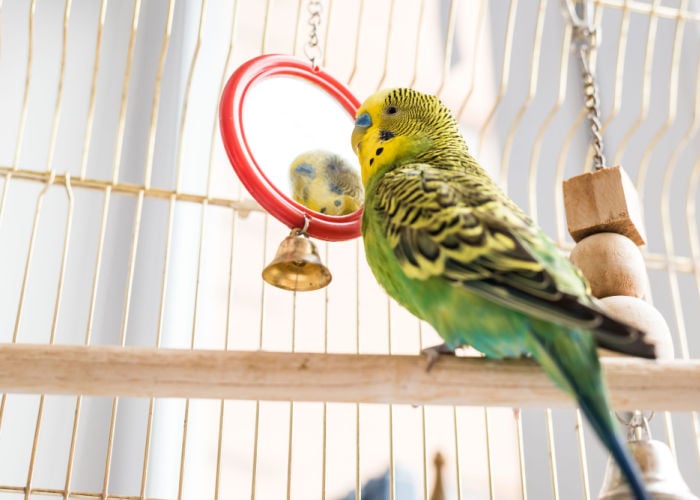
This image is property of www.thehappychickencoop.com.
Maintaining Cleanliness
Maintaining a clean cage is essential for your bird’s health and well-being. Regularly cleaning the litter tray and cage liners, performing thorough cage cleanings, and preventing mold and mildew growth are all important aspects of maintaining cleanliness.
Litter Tray and Cage Liners
Birds are naturally messy and produce a significant amount of waste. To keep the cage clean and odor-free, place a litter tray or paper liners at the bottom of the cage to catch droppings and any debris. These should be changed and cleaned daily to prevent the buildup of bacteria and foul odors.
Avoid using cat litter or cedar chips, as these can be harmful if ingested or inhaled. Opt for bird-safe litter options, such as paper-based bedding or corn cob bedding.
Regular Cage Cleaning
In addition to daily waste removal, regular deep cleaning of the cage is necessary to ensure a healthy environment. Remove all toys, perches, and dishes from the cage and thoroughly clean them using hot soapy water or a bird-safe cleaning solution. Rinse them well and allow them to air dry.
Empty and clean the cage itself by wiping down all surfaces with a bird-safe cleaner or a 50/50 solution of vinegar and water. Pay extra attention to corners, crevices, and food/water dish holders, as these areas can easily collect debris and bacteria. Rinse the cage well and dry it before reassembling.
Avoiding Mold and Mildew
Moisture can promote the growth of mold and mildew, which can be harmful to your bird’s respiratory system. To prevent this, ensure that the cage is placed in a well-ventilated area with good airflow. Avoid placing the cage near humidifiers, bathrooms, or areas prone to excessive moisture.
Regularly check for any signs of mold or mildew in the cage or surrounding areas. If any are found, address the issue immediately by thoroughly cleaning and disinfecting the affected areas. Additionally, monitor the humidity levels in the room and use dehumidifiers if necessary to maintain an optimal environment for your bird.
Creating a Comfortable Perch
Perches are an essential component of a bird’s cage, providing a place to rest, sleep, and exercise their feet. Choosing the right perch size, deciding between natural or synthetic perches, and providing a variety of perch textures all contribute to creating a comfortable perch space for your bird.
Choosing the Right Perch Size
When selecting perches for your bird’s cage, consider their species and foot size. The perch diameter should allow your bird to grip it comfortably without straining or splaying its toes. Offering perches with varying diameters and textures will help exercise your bird’s feet and prevent foot problems like bumblefoot or arthritis.
Generally, small birds like finches or canaries prefer perches with diameters between 1/2 to 3/4 inch, while medium-sized birds like budgies or cockatiels benefit from perches with diameters between 3/4 to 1 inch. Large birds like parrots or macaws require perches with diameters ranging from 1 to 2 inches, allowing them to grip comfortably.
Natural vs. Synthetic Perches
Both natural and synthetic perches have their advantages and should be incorporated into your bird’s cage. Natural perches, such as branches or untreated wooden dowels, provide a more natural and varied texture for your bird to grip and exercise its feet. They also contribute to a more visually appealing cage environment.
However, natural perches can be challenging to clean and may harbor bacteria or pests if not properly maintained. Synthetic perches, made of materials like PVC or acrylic, are easier to clean and disinfect. They also tend to be more durable and long-lasting. Combining both types of perches in the cage will offer your bird a variety of textures and exercise options.
Perch Textures
In the wild, birds encounter a range of textures on the branches they perch on. Providing a variety of perch textures within the cage mimics this natural experience and helps exercise your bird’s feet and promote good foot health.
In addition to smooth perches, incorporate textured perches like sandpaper or concrete perches into the cage. These help to naturally trim your bird’s nails and beak, reducing the need for frequent grooming. However, be cautious not to provide too many abrasive perches, as they can cause irritation or sores on your bird’s feet if used excessively.
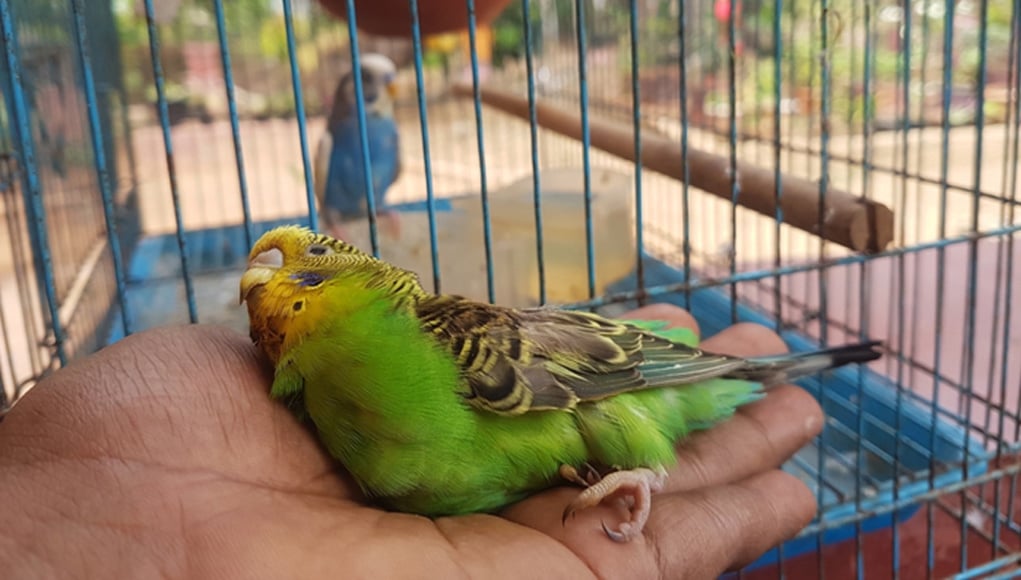
This image is property of www.thehappychickencoop.com.
Selecting Appropriate Toys
Toys play a vital role in keeping your bird mentally stimulated and preventing boredom. Providing a variety of toy types, selecting safe and bird-specific toys, and rotating the toys regularly are all essential for creating an enriching and engaging environment for your bird.
Variety of Toy Types
Offering a wide range of toy types ensures that your bird remains engaged and stimulated. Birds have different play preferences and instincts, so it’s important to provide toys that cater to these individual needs.
Shredding toys, like paper-based toys or palm leaf shredders, fulfill a bird’s natural instinct to forage and shred. Puzzle toys, like treat-dispensing toys or foraging balls, stimulate your bird’s problem-solving skills. Interactive toys, such as swinging or hanging toys, encourage physical activity and playfulness. Include a variety of toys in the cage to cater to these different play preferences and keep your bird entertained.
Safe and Bird-Specific Toys
Safety should always be the top priority when selecting toys for your bird. Avoid toys with small parts, strings, or loops that can pose choking or strangulation hazards. Choose toys made from bird-safe materials, such as untreated wood, stainless steel, or natural fibers.
Bird-specific toys, like bells, mirrors, or beads, provide extra mental stimulation and entertainment. However, monitor your bird’s behavior with these toys to ensure they are not becoming overly fixated or aggressive towards them. If you notice any signs of obsessive behavior or aggression, remove the toy and replace it with a different one.
Rotating Toys
Birds can quickly become bored with their toys if they are not regularly rotated or replaced. To maintain your bird’s interest and prevent toy fatigue, regularly rotate toys in and out of the cage. This will create a sense of novelty and keep your bird engaged and entertained.
As you rotate toys, inspect them for any signs of wear or damage. Dispose of toys that are broken or frayed to prevent any potential injury to your bird. Introducing new toys gradually and observing your bird’s reaction will give you an idea of their preferences and help you tailor their toy selection accordingly.
Setting Up the Feeding Area
A properly set-up feeding area ensures that your bird has easy access to fresh food and water, encouraging healthy eating habits. Choosing appropriate food and water dishes, positioning them correctly, and providing a continuous supply of fresh water and food are all crucial in maintaining your bird’s health.
Food and Water Dishes
Choose food and water dishes that are easy to clean, made of bird-safe materials, and appropriately sized for your bird. Stainless steel or ceramic dishes are commonly used as they are durable, hygienic, and resistant to chewing or tipping.
To prevent food and water from becoming contaminated with droppings or debris, consider using dishes with raised rims or attachable bowl holders. This will help maintain cleanliness and prevent your bird from kicking out or soiling their food and water.
Proper Placement
Position the food and water dishes in an easily accessible area within the cage, away from perches and toys. This will prevent contamination and spillage. Provide a stable and level surface for the dishes to prevent tipping or sliding.
Avoid placing the dishes directly under perches or in busy areas of the cage where they may become soiled quickly. Monitoring your bird’s eating habits and preferences will help you determine the best placement for the dishes. Adjust and observe as needed to ensure your bird can comfortably access their food and water.
Fresh Water and Food
Clean, fresh water should be available to your bird at all times. Replace the water daily and rinse the dish thoroughly to remove any debris or bacteria. Monitor the water level throughout the day and refill as necessary.
When it comes to feeding your bird, provide a balanced diet that caters to their species and nutritional requirements. Consult with a avian veterinarian or an expert in bird nutrition to determine the best diet for your specific bird species. Regularly inspect the food for freshness, mold, or insect infestations. Remove any uneaten or spoiled food promptly to maintain hygiene and prevent bacterial growth.
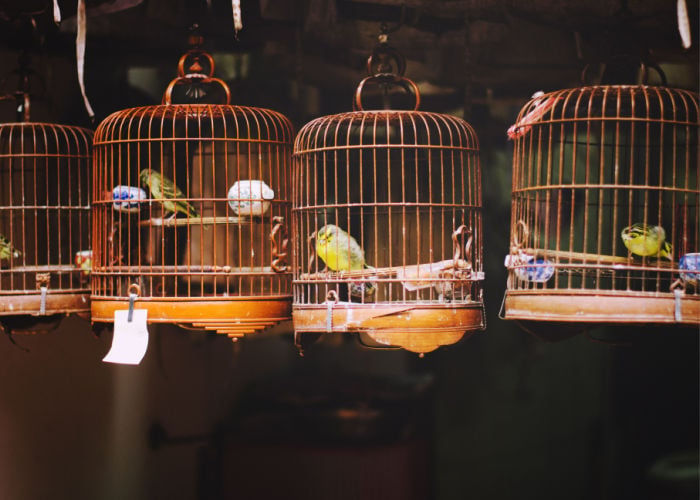
This image is property of www.thehappychickencoop.com.
Providing Mental Stimulation
Mental stimulation is key to keeping your bird happy, healthy, and behaviorally sound. Toy rotation and introduction, foraging opportunities, and social interaction all contribute to providing the necessary mental enrichment for your bird.
Toy Rotation and Introduction
Regularly rotating toys within the cage and introducing new toys keeps your bird engaged and stimulated. Birds are curious creatures and appreciate novelty. Removing and reintroducing toys on a weekly or bi-weekly basis ensures that your bird does not become bored or disinterested.
When introducing new toys, observe your bird’s reaction and provide positive reinforcement for exploring and interacting with them. Offer treats or praise to encourage play behavior and create positive associations with the new toy. This will motivate your bird to explore and engage with the new additions to their environment.
Foraging Opportunities
In the wild, birds spend a significant amount of time foraging for food. Providing similar foraging opportunities within the cage taps into your bird’s natural instincts and keeps them mentally stimulated.
Include foraging toys or puzzles in the cage that require your bird to work for their food. Hide treats or food items within these toys and watch as your bird engages in problem-solving and manipulation to retrieve their rewards. This not only provides mental enrichment but also helps prevent boredom-related behaviors like feather plucking or excessive vocalization.
Social Interaction
Birds are highly social animals that thrive on companionship and interaction. Spending quality time with your bird, engaging in activities like talking, singing, or gentle play, provides important social stimulation.
Interacting with your bird on a daily basis not only strengthens the bond between you but also helps prevent loneliness and boredom. Birds are intelligent and enjoy learning new tricks or commands. Training sessions or teaching simple tricks not only provide mental stimulation but also foster a sense of accomplishment and enrichment for your bird.
Maintaining a Healthy Environment
Maintaining a healthy environment is vital for the overall well-being of your bird. Regular cage inspections, monitoring for signs of illness, and ensuring proper ventilation contribute to creating and maintaining a healthy living space for your feathered friend.
Regular Cage Inspections
Regularly inspecting the cage for any signs of wear, damage, or hazards is essential. Check for any sharp edges, loose wires, or broken parts that may pose a risk to your bird. Ensure that there are no gaps or vulnerabilities in the cage structure that could potentially allow your bird to escape or predators to enter.
Inspect the toys, perches, and feeding dishes for any signs of wear or damage. Remove or replace any items that pose a risk to your bird’s safety. Consistently maintaining a safe and secure environment is crucial for preventing accidents and promoting your bird’s well-being.
Monitoring for Signs of Illness
Birds are susceptible to various illnesses and health conditions. Stay vigilant and observe your bird for any changes in behavior, appearance, or appetite. Monitor their droppings for consistency, color, and presence of any abnormalities.
Common signs of illness in birds can include loss of appetite, excessive sleeping, changes in weight, fluffed feathers, wheezing, or discharge from the eyes or nostrils. If you notice any of these signs or have concerns about your bird’s health, consult with a vet who specializes in avian care.
Proper Ventilation
Proper ventilation is crucial for maintaining good air quality within the cage. Birds are especially sensitive to airborne pollutants and respiratory irritants. Ensure that the cage is placed in a well-ventilated area, with good airflow and access to fresh air.
Avoid placing the cage in areas with poor air circulation or near potential sources of air pollution, such as smoking or cooking areas. Adequate ventilation helps remove stale air, odors, and airborne particles, promoting a healthy and comfortable environment for your bird.
In conclusion, setting up a suitable cage environment for your bird is essential for their overall health, well-being, and happiness. By carefully considering the factors of cage size and shape, materials, bar spacing, positioning, space provision, safety measures, cleanliness, perch comfort, toy selection, feeding area setup, mental stimulation, and environmental maintenance, you can create a perfect and enriching environment that caters to your bird’s specific needs. Remember to regularly inspect and adjust the cage setup based on your bird’s requirements and preferences to ensure a long and healthy life for your feathered companion.


